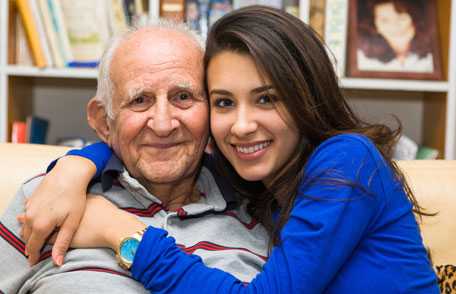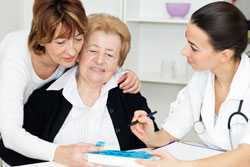Stepping Into Caregiving
 Preparation can help you transition to caregiving.
Preparation can help you transition to caregiving.
“There are four kinds of people:
those who will become caregivers,
those who are caregivers,
those who were caregivers,
and those who will need caregiving themselves.”
– Former First Lady Rosalynn Carter
Help for New Caregivers
It is easy to become overwhelmed as a new caregiver. Five tips that can help are:
- Learn about the person’s medical condition or diagnosis. By learning more you will understand your loved one’s disease or condition and can be better able to care for them now and plan for the future. Also, set aside some time to acquaint yourself with their doctors, therapists, prescription drugs, and insurance coverage.
- Talk about finances and healthcare wishes. Having these conversations can be difficult but can help you carry out your loved one’s wishes and take care of their financial affairs should they no longer be able to do these things themselves.
-

Caregivers provide connection and compassion to promote Healthy Aging.
- Invite family and close friends to come together and discuss the needed care. If possible, it’s helpful to include the person needing care in this meeting. This meeting gives you a chance to explain what they need, plan for care, and ask others for help.
- Use community resources. Services such as Meals on Wheels, adult day programs, and respite care may help relieve your workload and increase your free time. Look for caregiver educational programs that will increase your knowledge and confidence.
- Take care of yourself. Don’t forget your own mental and physical health by putting your loved one’s needs first. Nearly half of caregivers have reported that their health has gotten worse due to caregiving. Of those caregivers who say their health has declined, over half1 report that declining health has made it harder to support their loved one.
Although caregiving can be a challenge, many people who are caregivers report a tremendous feeling of satisfaction and purpose.
What is caregiving?
Caregiving takes many forms. Many of us help out family members and friends who are older, sick, or disabled every day but don’t think of ourselves as caregivers. Caregiving can range from providing short- or long-term financial assistance or running errands to providing comprehensive round-the-clock care. Although some people receive care from paid caregivers, most (75%)2 rely on unpaid assistance from families, friends and neighbors. Many people become caregivers unexpectedly, which can be very difficult.
References
- Evercare® Study of Caregivers in Decline: Findings from a National Survey. September, 2006, Evercare in collaboration with the National Alliance for Caregiving. Washington, D.C.
- Caregiving in the U.S. 2015. National Alliance for Caregiving Public Policy Institute. Washington, D.C.
More Information
More Information
- Advance Care Planning – Information on the hows and whys of preparing for chronic disease management.
- National Family Caregiver Support Program – Administered by the Administration on Community Living, this program offers a range of services to support family caregivers.
- ADEAR Center (Alzheimer’s Disease Education and Referral) – A service of the National Institute on Aging of the National Institutes of Health, this site provides a variety of resources and tools on Alzheimer’s disease. The ADEAR Center also has a staff of information specialists able to respond to questions about Alzheimer’s disease.
- Caregiver Resource Kit – A resource from Medicare that provides a variety of informative materials, tip sheets, and videos to help caregivers address challenges and work effectively with Medicare to ensure their family members and friends receive the best possible care.
- Cancer Survivorship – Information for caregivers of cancer patients and survivors.
- Page last reviewed: November 2, 2015
- Page last updated: November 2, 2015
- Content source:
- National Center for Chronic Disease Prevention and Health Promotion, Division of Population Health
- Page maintained by: Office of the Associate Director for Communication, Digital Media Branch, Division of Public Affairs




 ShareCompartir
ShareCompartir